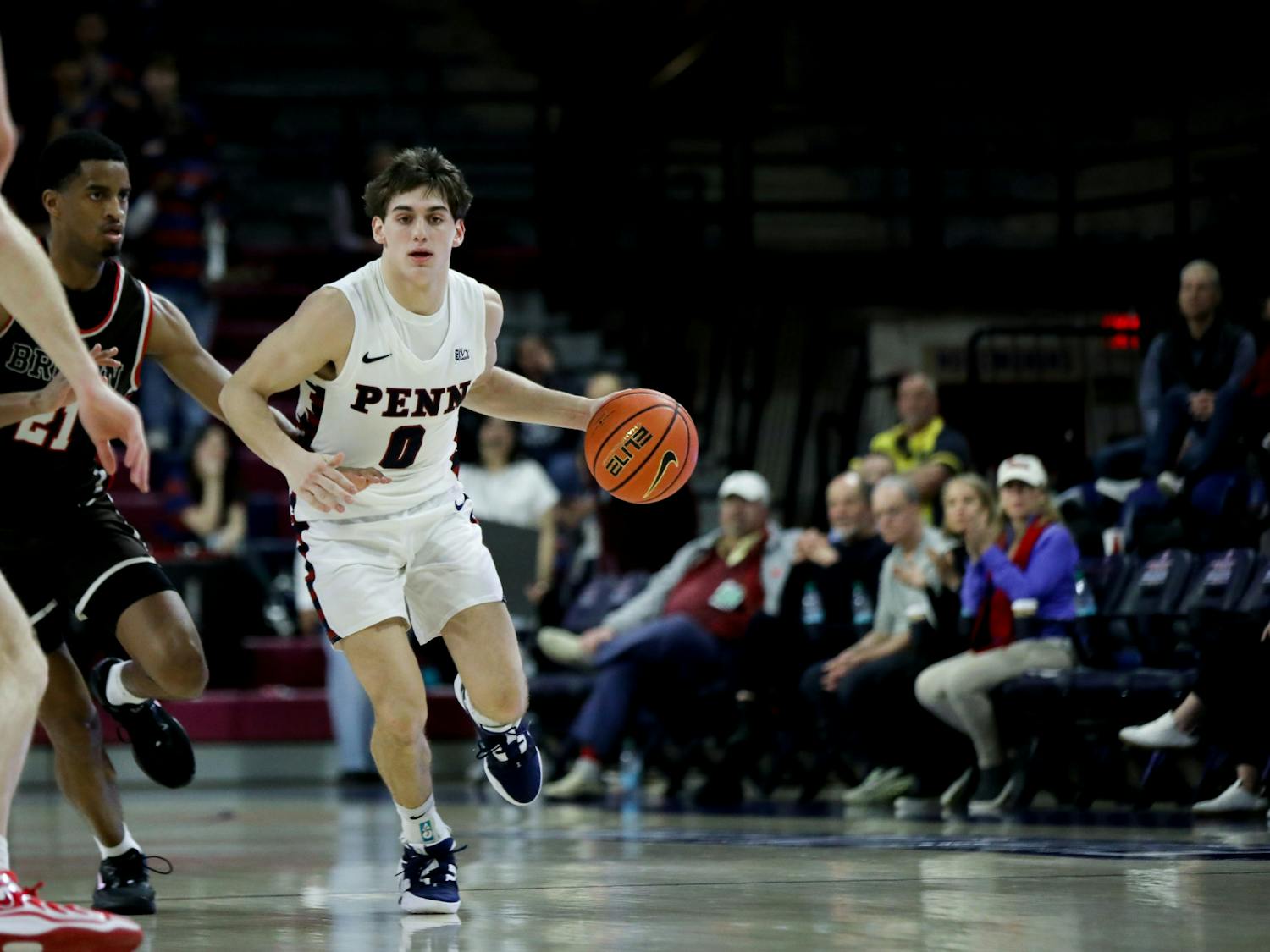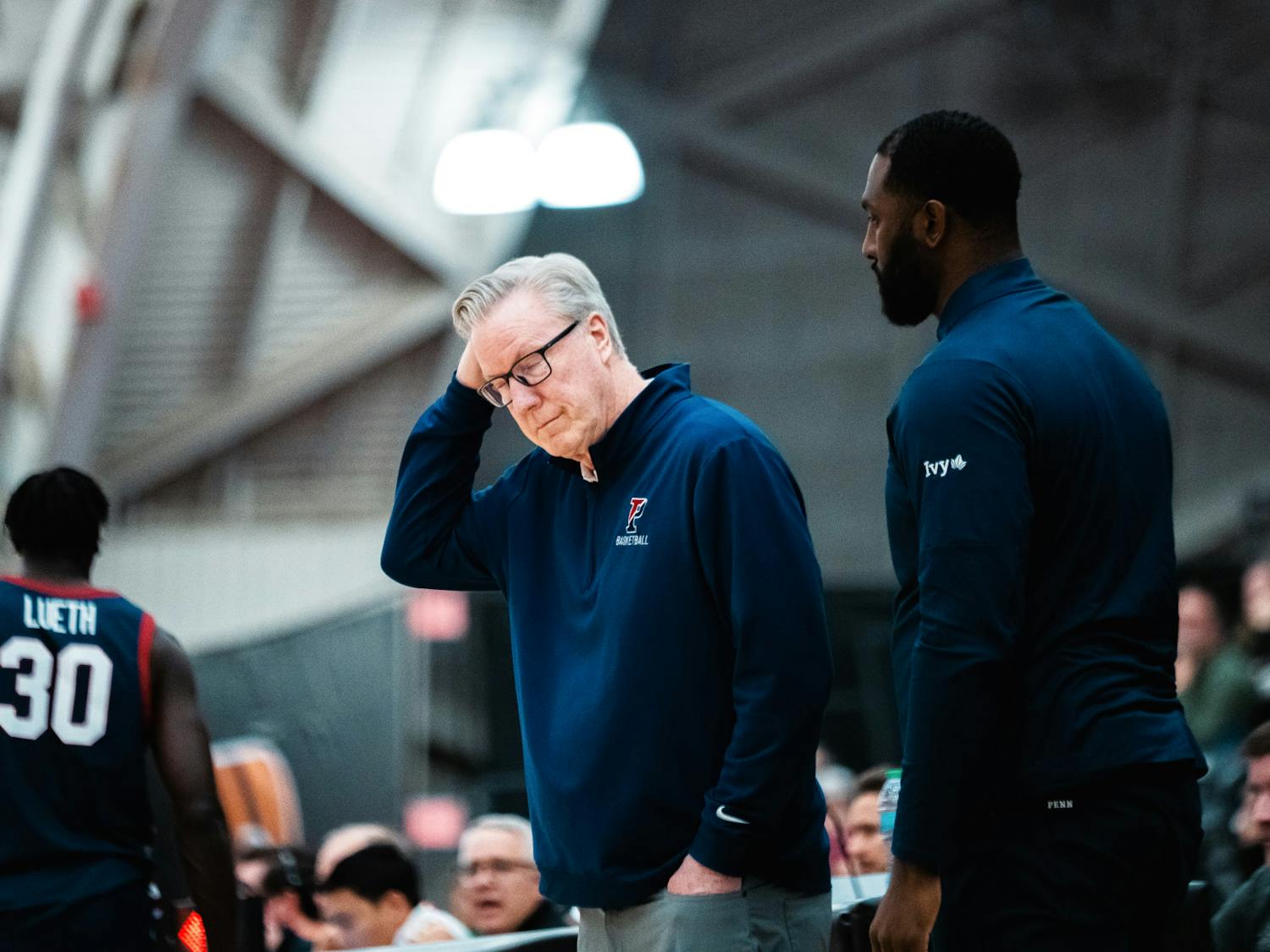Looking at the Quakers' defense on paper, it makes sense that a 5-2 is the set of choice.
The 6-foot, 285-pound Naheem Harris clogs the middle from the nose-guard position, defensive end Mike Marinelli provides size and speed over the tackles and co-captain Joe Anastasio fortifies the linebacker position.
What might not be so obvious is that the last time Penn ran anything other than the 50-front defense, the Philadelphia Eagles were on their way to losing Super Bowl XV.
Since the 1981 season, coach Al Bagnoli said, the Quakers have primarily lined up with three down linemen - nose guard and two tackles, two defensive ends upright and nearly level with the defensive tackles, two linebackers, two corners and two safeties.
Almost all teams in college and pro football put seven in the box, but Penn is one of the few to stack so many up front.
"We did it with the theory that it's easier for us to recruit linebacker-types [to play defensive end] than it was to recruit big, dominating offensive linemen," Bagnoli said. "When you can only recruit a couple of [lineman types], you need a defense that can get more of the other body types in."
This defense became popular at the college level in the 1980s when rushing attacks were formidable, especially in a few major conferences. Today, it is rarely used (except in high-school), though variations are used at higher levels.
There are several keys to the defense. Harris' job is simple but possibly the biggest.
"The nose guard has the opportunity not to necessarily have an assignment," he said. "I can go and just hit the guy in front of me, instead of having to worry about going the wrong way or things like that."
Having a first-team All-Ivy player at that position can't hurt.
"Middle guard is critical," Bagnoli said. "If they can single-block the middle guard, that causes you problems."
Anastasio and Jay Colabella play a big role at linebacker, partly because there are just two of them.
"That middle triangle of the middle guard and the two inside linebackers and safety have to be very, very good - if they're not, you're in for a long afternoon," Bagnoli said. "They have to be really active up front and play-makers inside."
But the defensive ends make the system what it is. They line up in a two-point or upright stance, even with the tackles.
Not unlike linebackers in a 3-4 defense, the end has a lot of responsibility. He must be big enough to stop the run, fast enough to stay with pass patterns in the flat and smart enough to grasp the vast playbook for the position.
"I played a lot as a sophomore, . and even into games last year I was still kind of getting lost when all of the bullets would start flying," Marinelli said.
The end's responsibility is to funnel the run game to the inside, a strength of the defense. This makes for easy games against some Ivy teams and headaches against others.
"When we play Brown, that's a fun week for me. . I get a lot of action towards me, and that way I can force back in, or if they try to bounce I can make the play on the outside," Marinelli said. "When we play Princeton, they run a lot of fast motion and a lot of that stuff is outside, so they start rotating in some smaller guys to get to the perimeter quicker."
But it's a defense that has been effective enough for Penn to use for the last 26 years, and Bagnoli hopes it will be for more to come.








